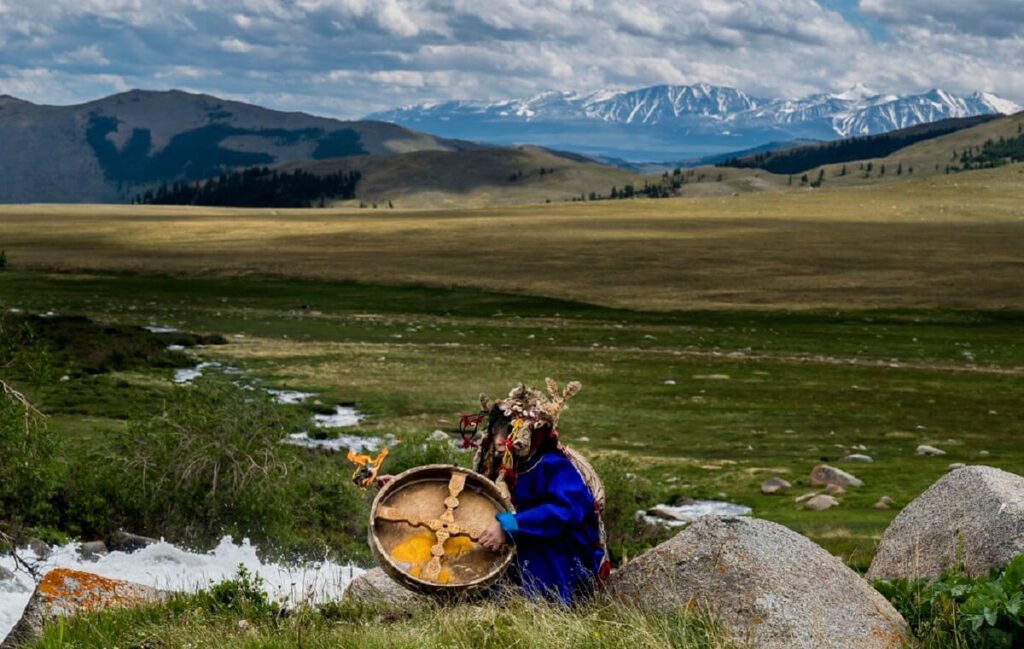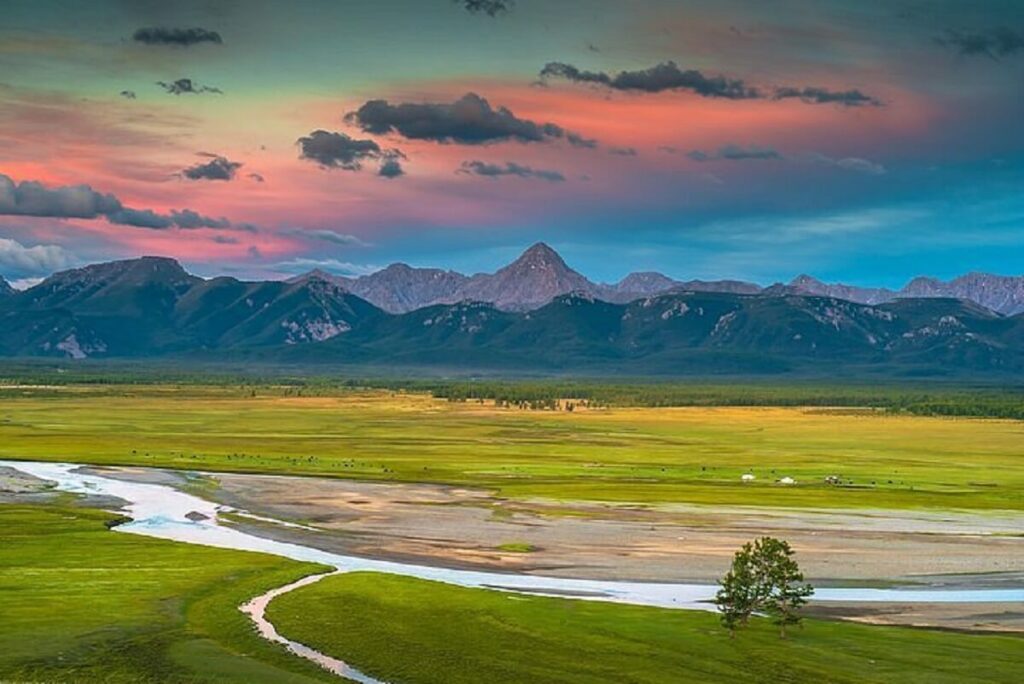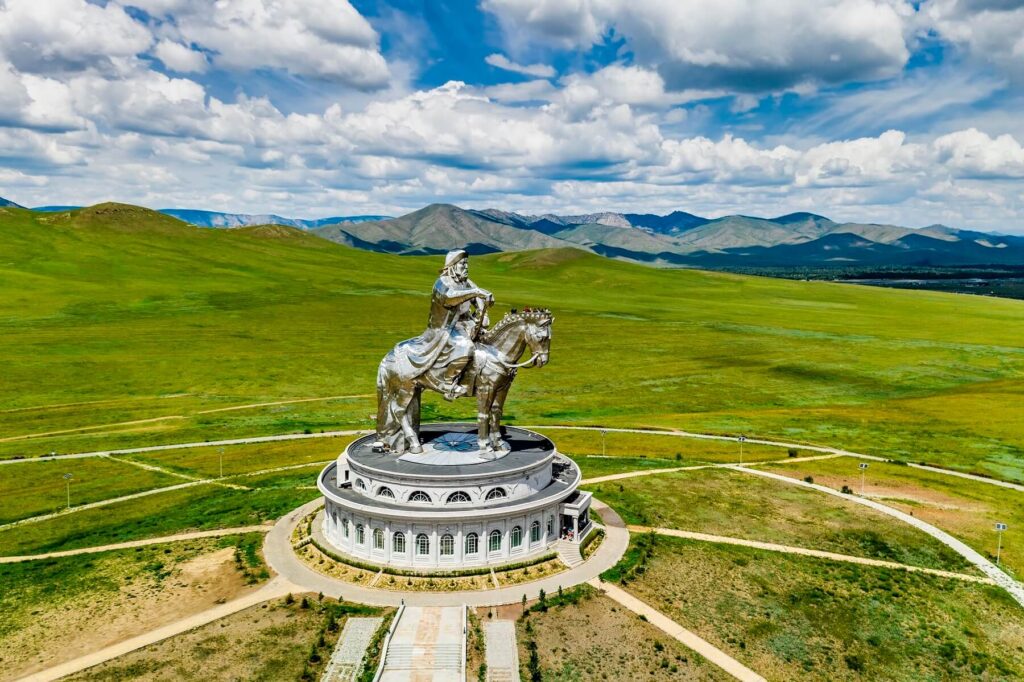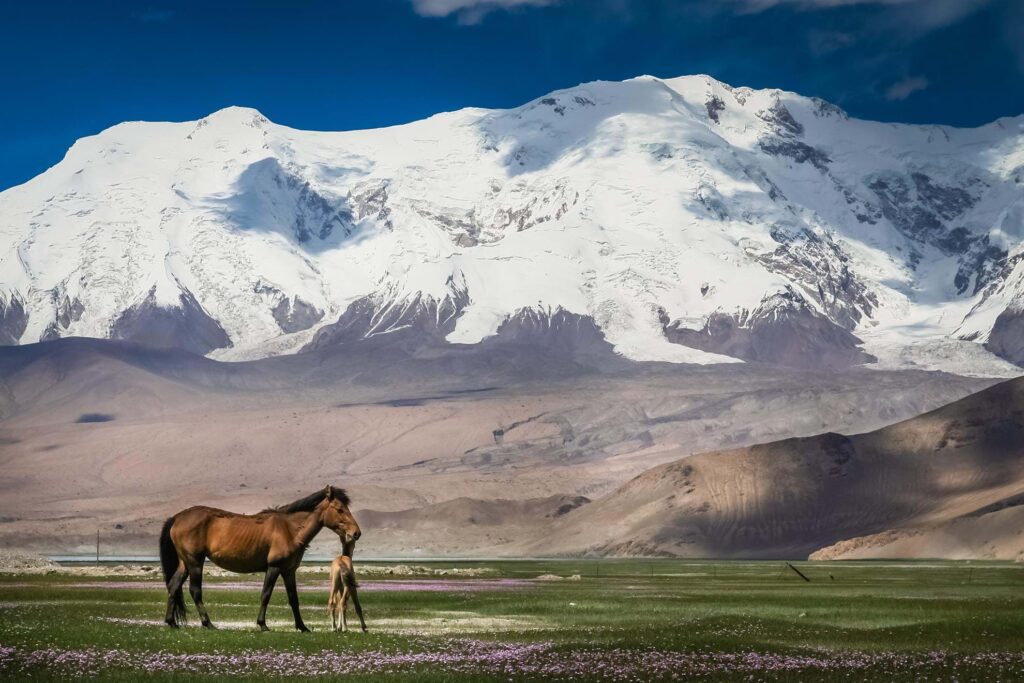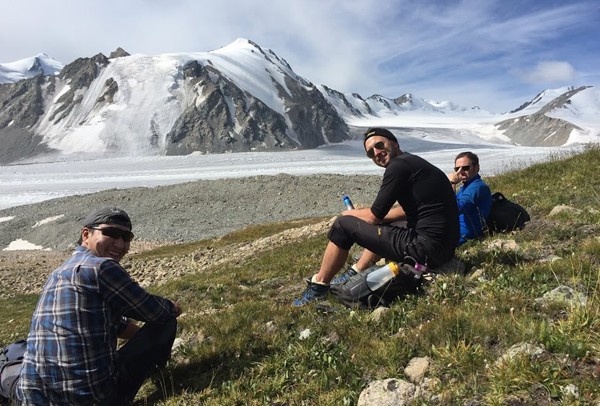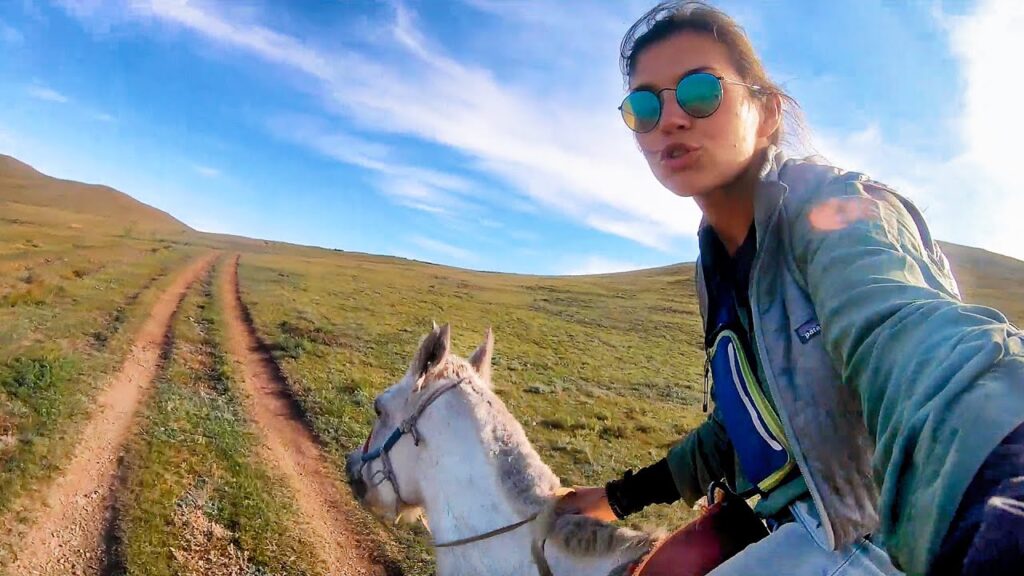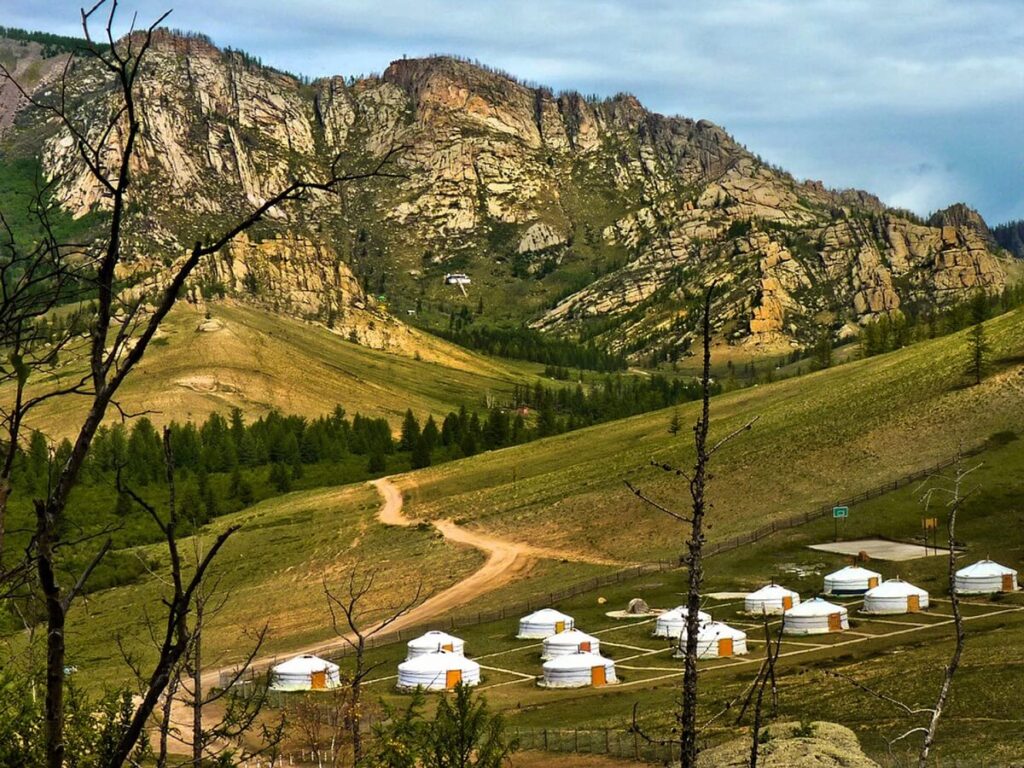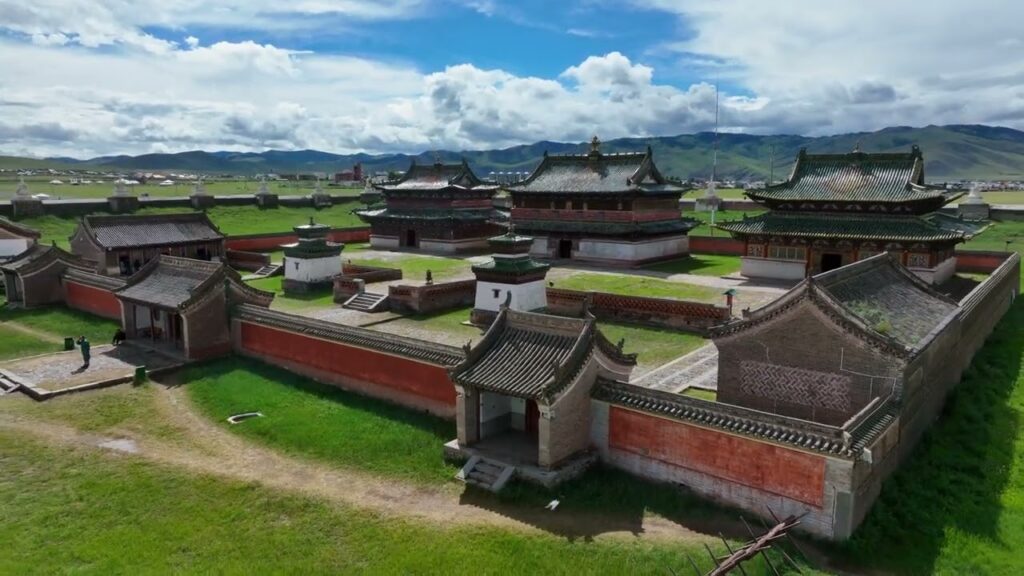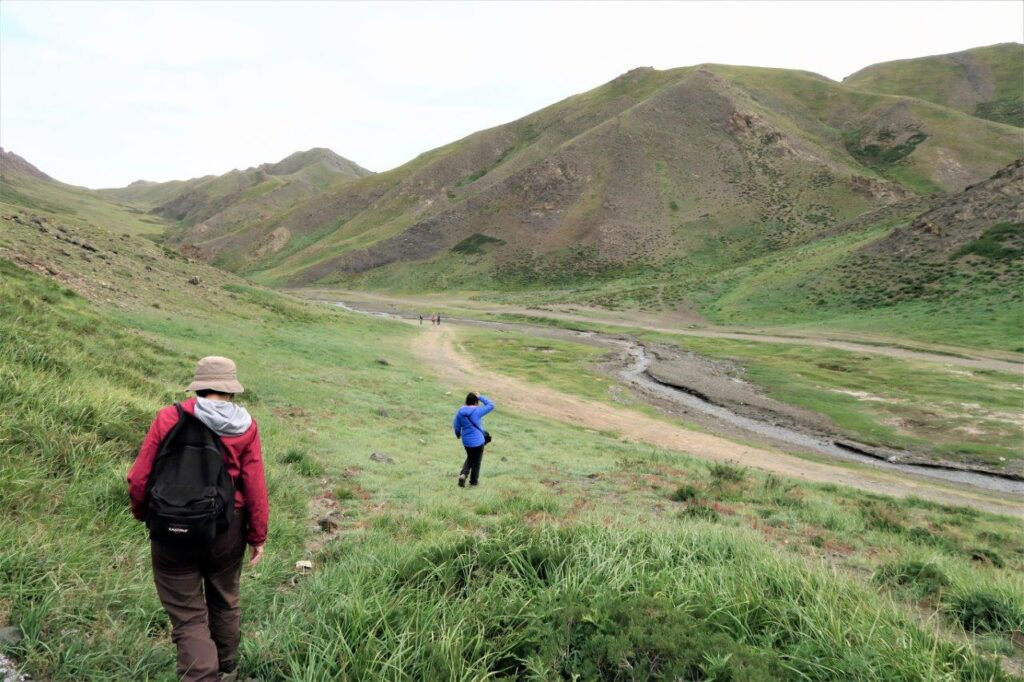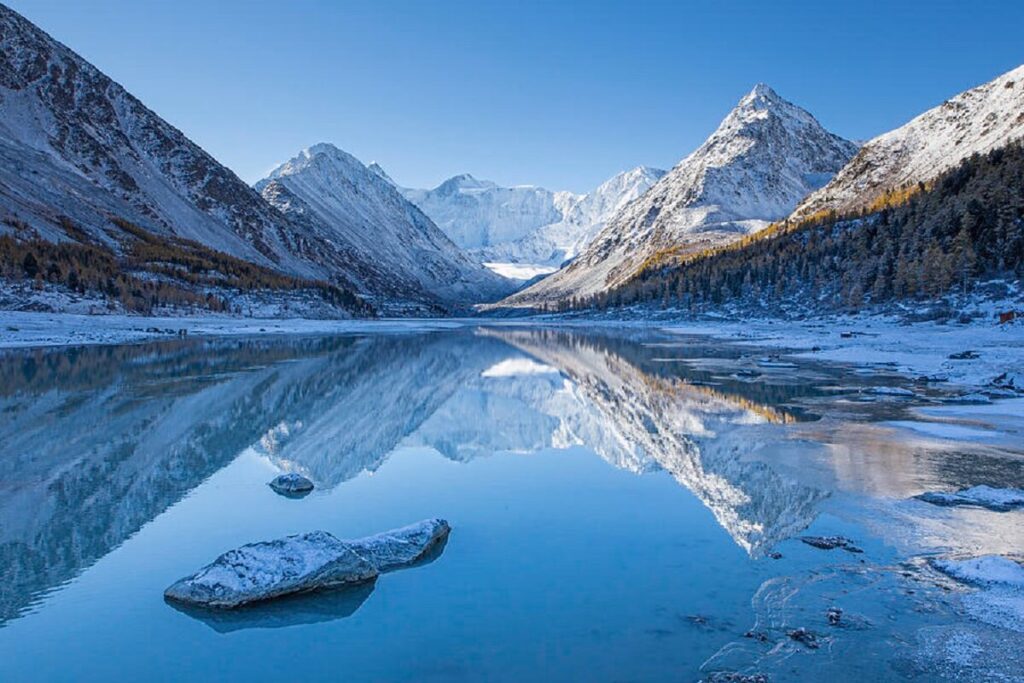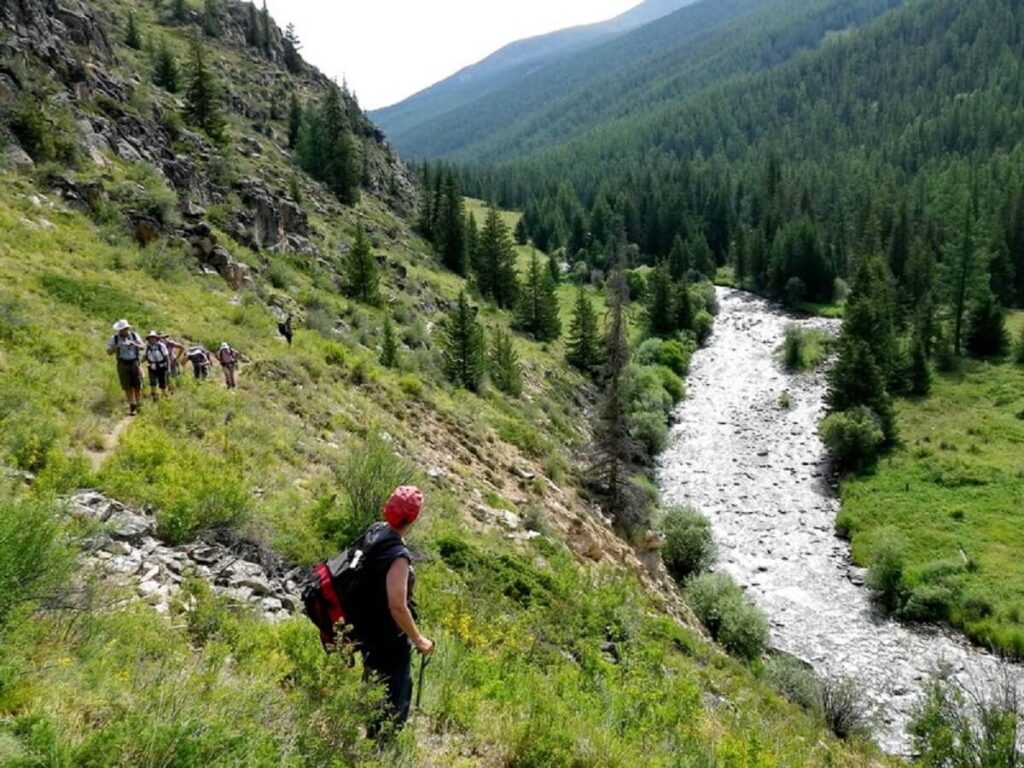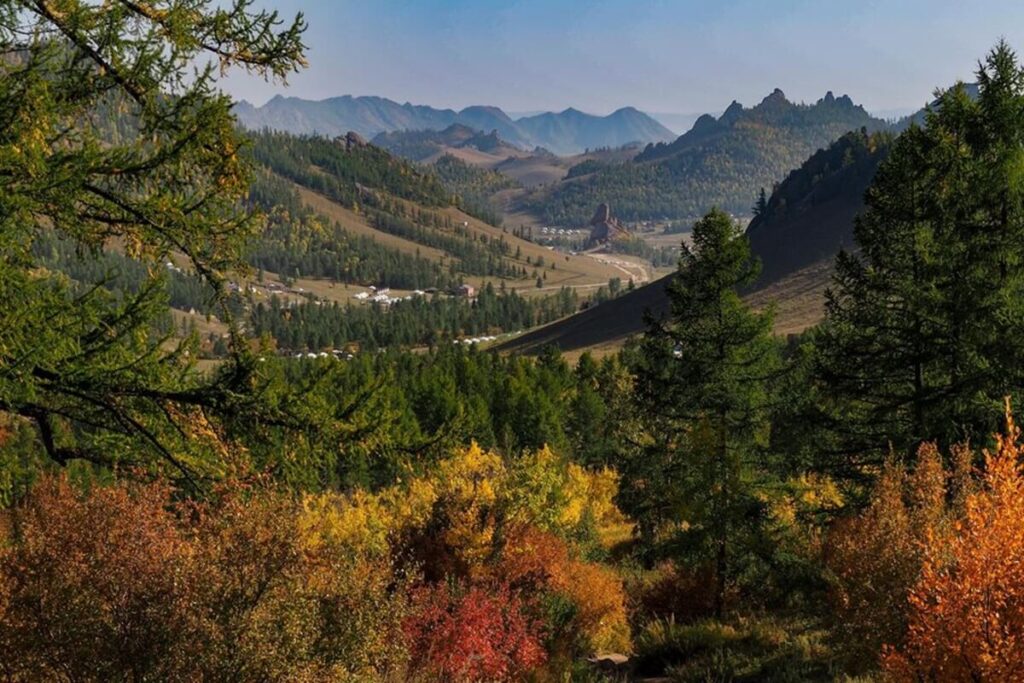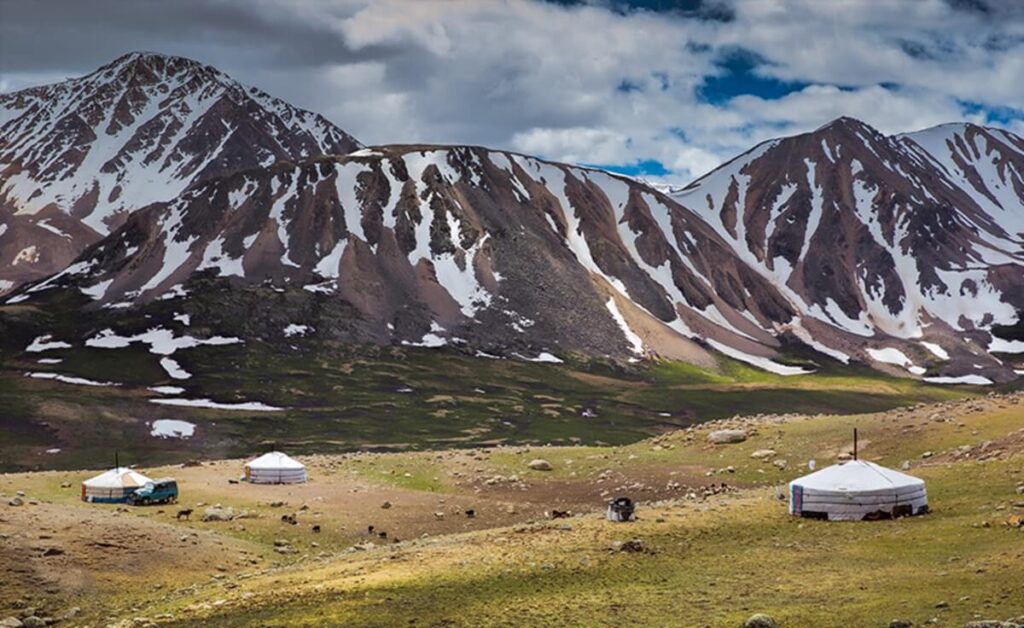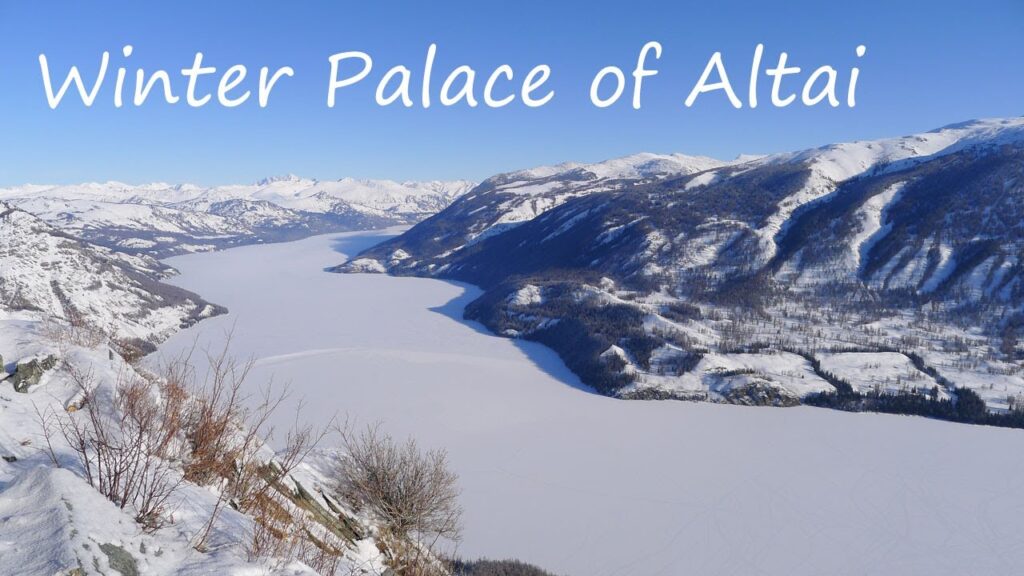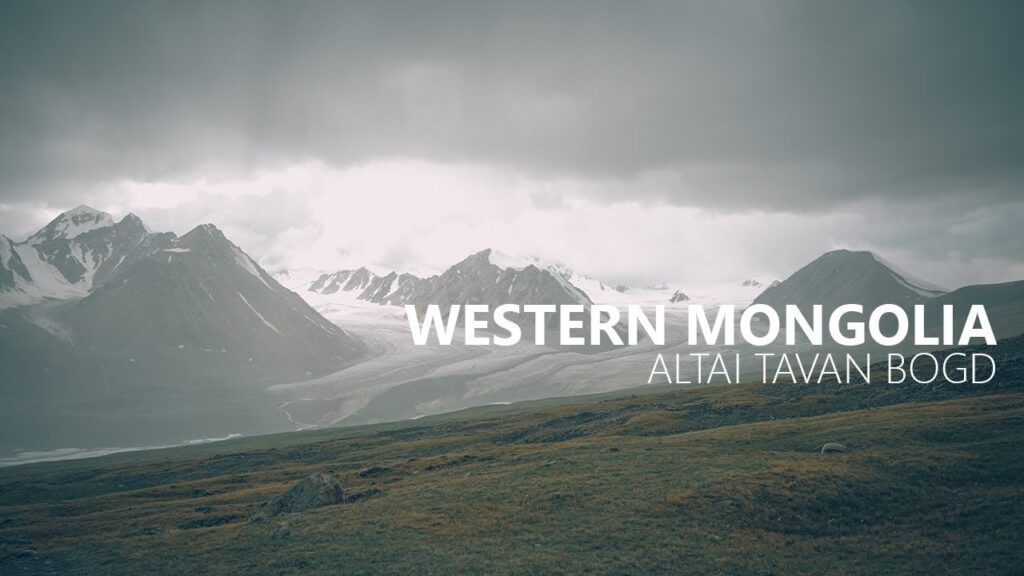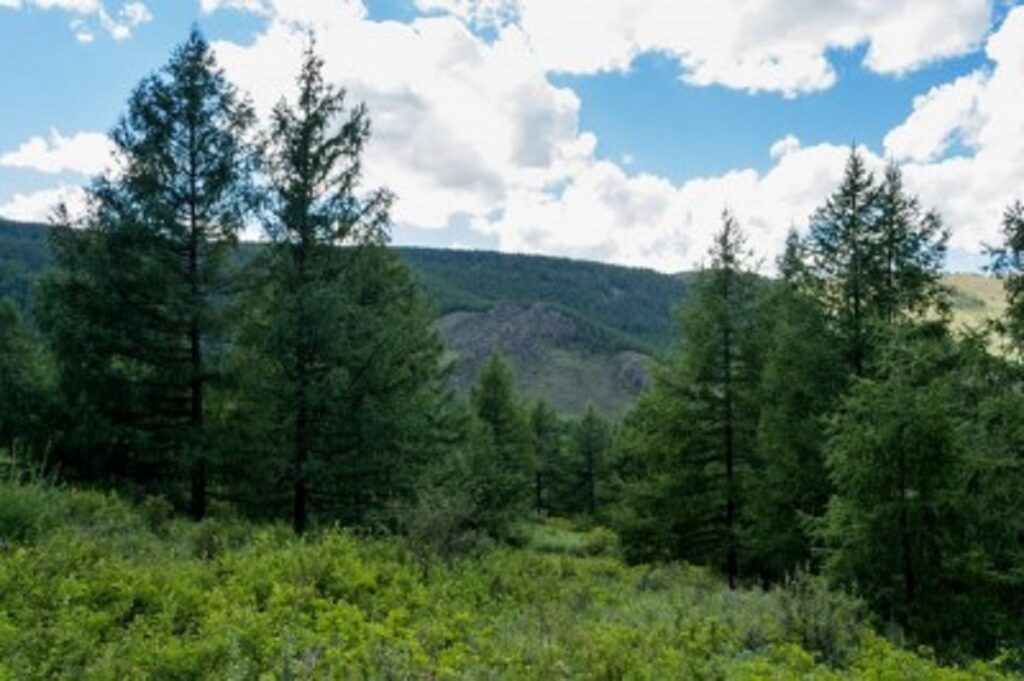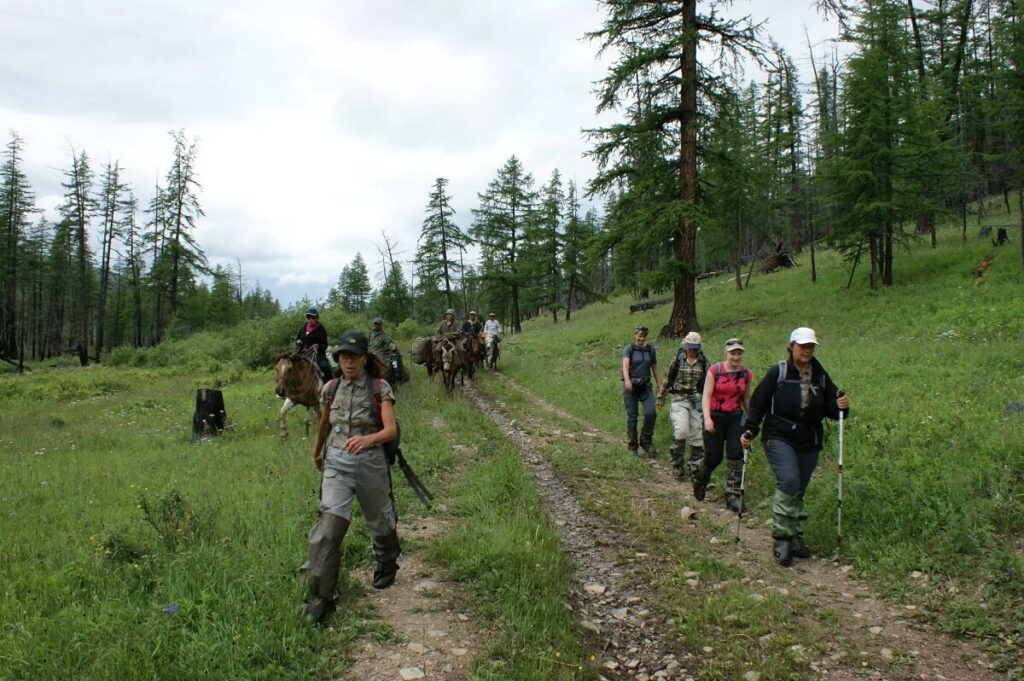Tsambagarav, situated in the Altai Tavan Bogd National Park of western Mongolia, stands as a geological masterpiece.
Its elevation, reaching 4,193 meters (13,753 feet), makes it a prominent feature in the Altai mountain range. This mountainous giant is a product of tectonic forces, where the Eurasian and Indian plates collide, resulting in the uplift of the Earth’s crust and the formation of awe-inspiring peaks.
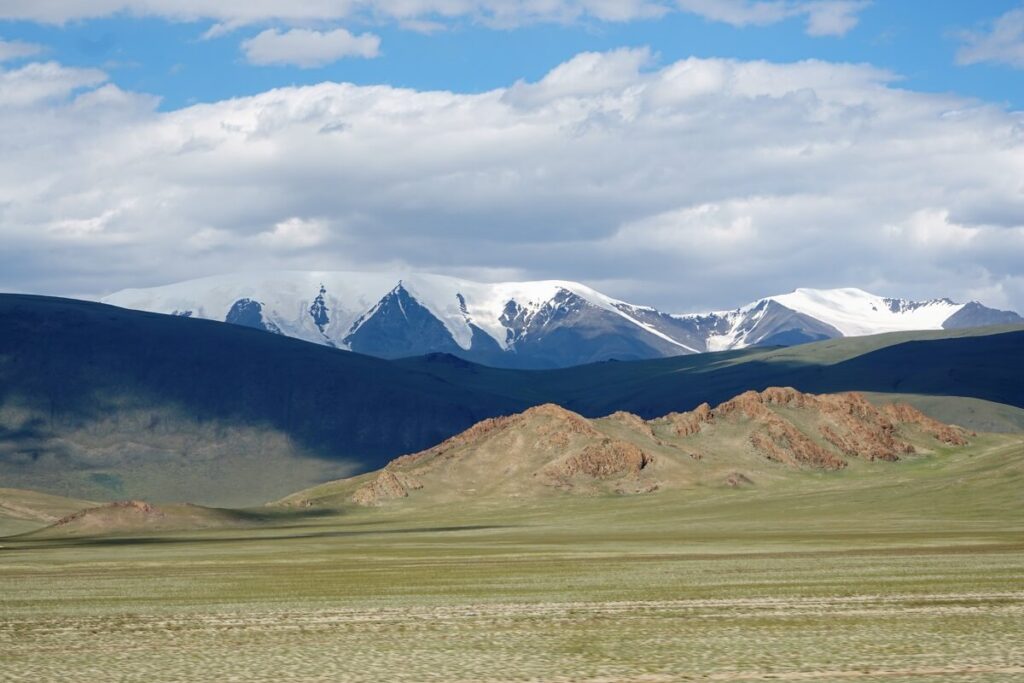
Glacial Processes
The physical characteristics of Tsambagarav are shaped by glacial processes. Large glaciers, such as Tsambagarav Glacier, carve through the landscape, eroding and sculpting the bedrock over time.
These glaciers act as dynamic agents, transporting vast amounts of sediment and reshaping the terrain through processes like plucking and abrasion.
Biodiversity and Ecological Zones
The mountain’s biodiversity is influenced by its elevation gradient.
From the base to the summit, Tsambagarav exhibits distinct ecological zones.
Alpine meadows at lower elevations give way to sparse vegetation, eventually leading to rocky and snow-covered peaks.
This gradient provides habitat diversity, supporting a variety of flora and fauna adapted to specific environmental conditions.
Flora Adaptations
The flora of Tsambagarav includes hardy plants capable of surviving in harsh alpine conditions.
Species like Saxifraga and Androsace are adapted to the cold and variable climate, displaying intricate adaptations such as rosette formations and small, densely packed leaves to minimize water loss.
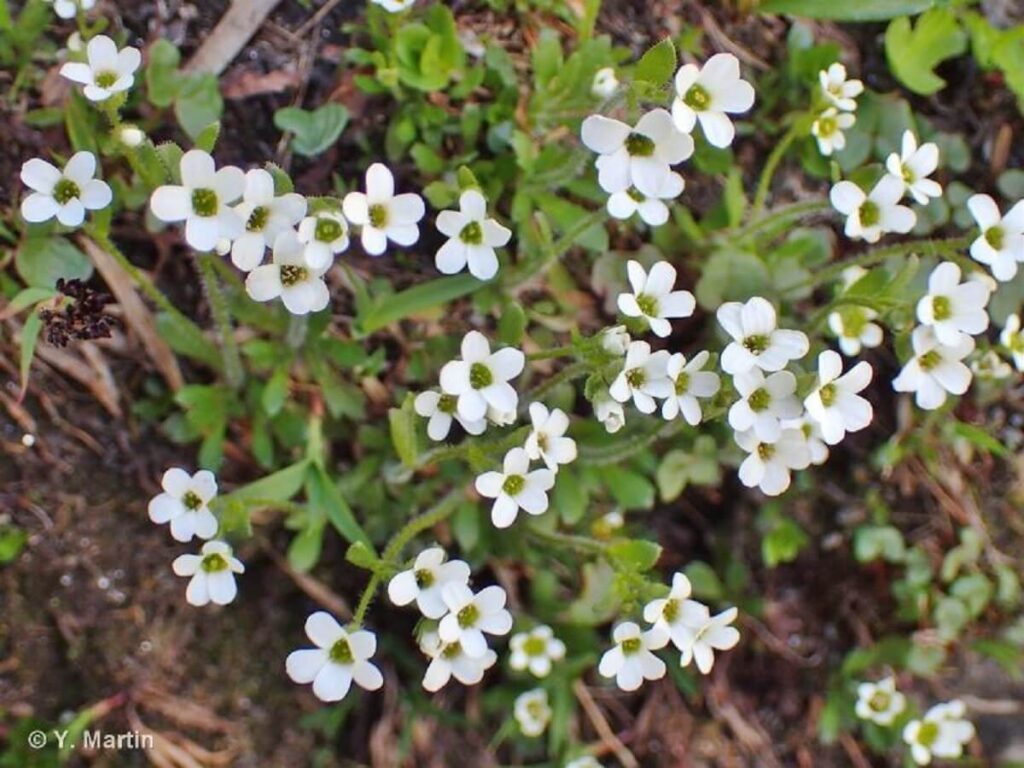
Fauna Adaptations
The fauna of Tsambagarav includes notable species like the Siberian ibex (Capra sibirica). These ungulates have evolved specialized hooves for navigating steep and rocky terrains.
The mountainous terrain also serves as a habitat for the elusive snow leopard (Panthera uncia), a species specially adapted to the cold and rugged environment.
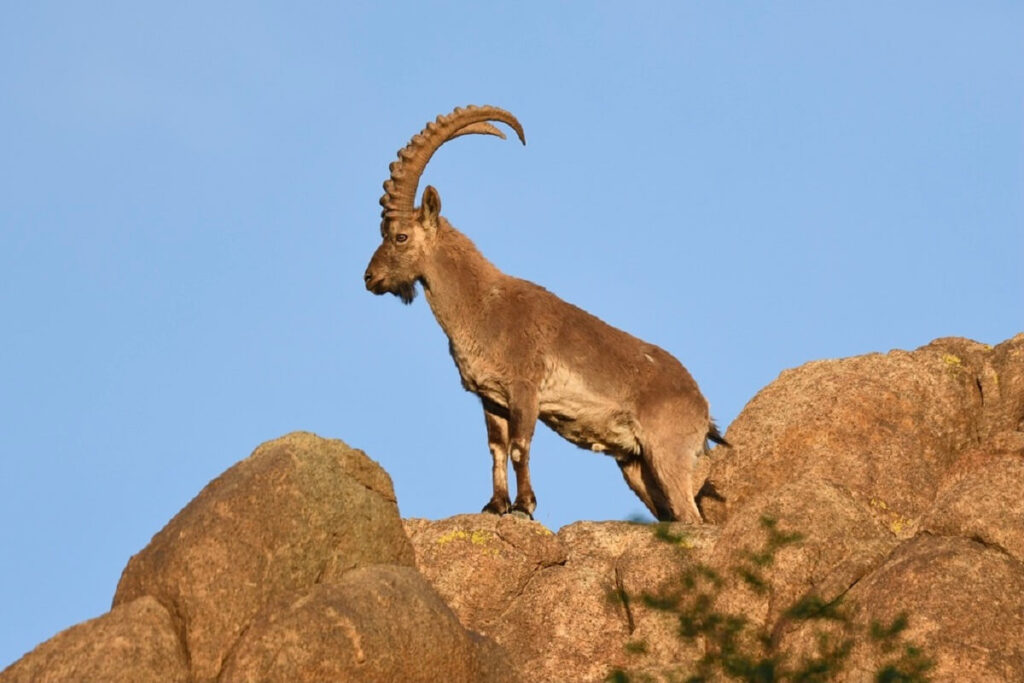
Nomadic Communities
The region surrounding Tsambagarav has been home to nomadic communities for centuries. Their livelihoods are intricately linked to the seasonal variations influenced by the mountain.
The nomads, practicing transhumance, move with their herds to different elevations throughout the year, showcasing a sustainable relationship with the ecosystem.
Geological Studies and Environmental History
Geological studies indicate that Tsambagarav has undergone various climatic shifts over millennia, leaving behind a historical record embedded in its rocks and sediments.
Researchers analyze ice cores from glaciers like Tsambagarav Glacier to reconstruct past climate conditions, providing insights into the region’s environmental history.
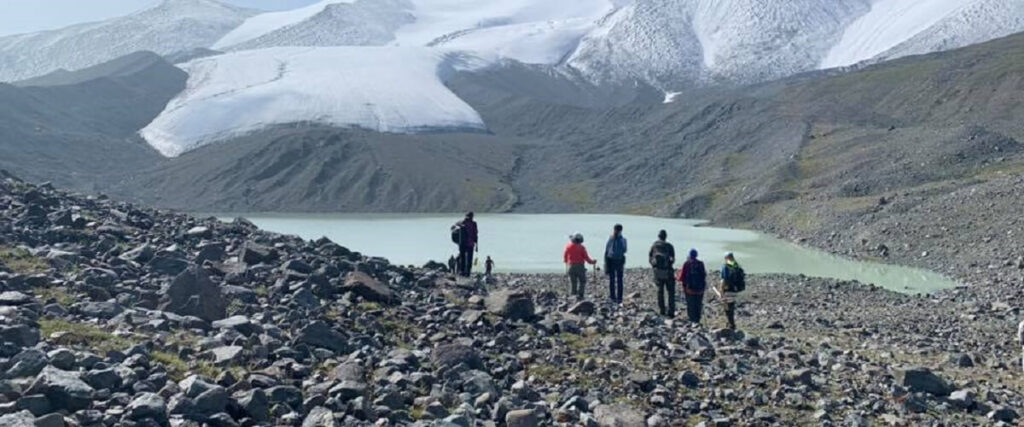
Conclusion
In conclusion, Tsambagarav mountain is a scientific treasure trove, offering insights into Earth’s geological and ecological processes.
Its formation, shaped by tectonic forces and glacial dynamics, has created a landscape rich in biodiversity.
Scientific endeavors around Tsambagarav contribute to our understanding of mountain ecosystems, climate history, and the delicate balance between nature and human communities in this remote corner of the world.


